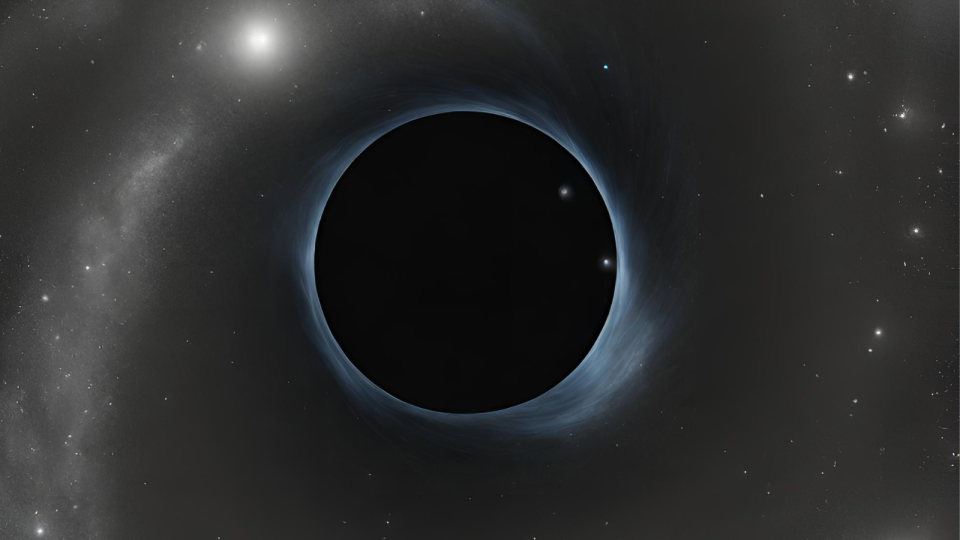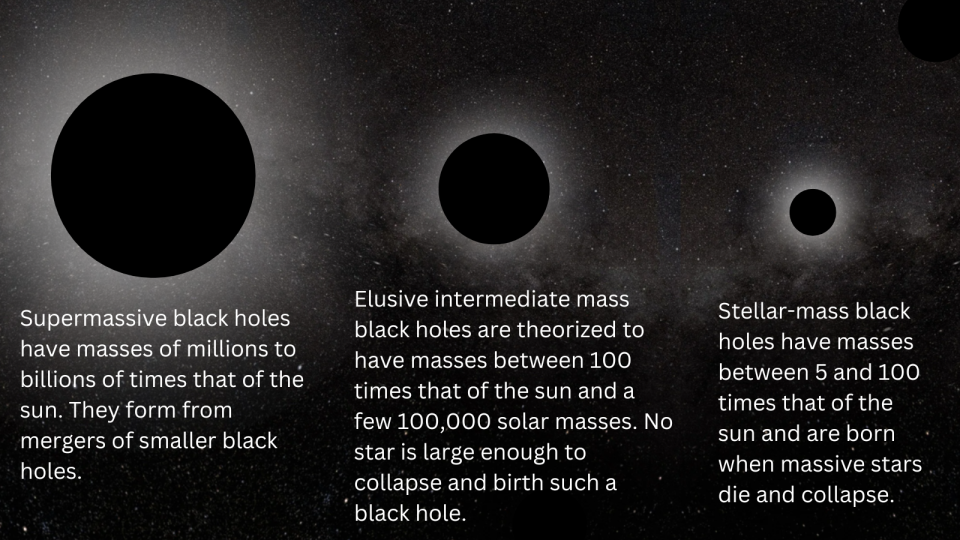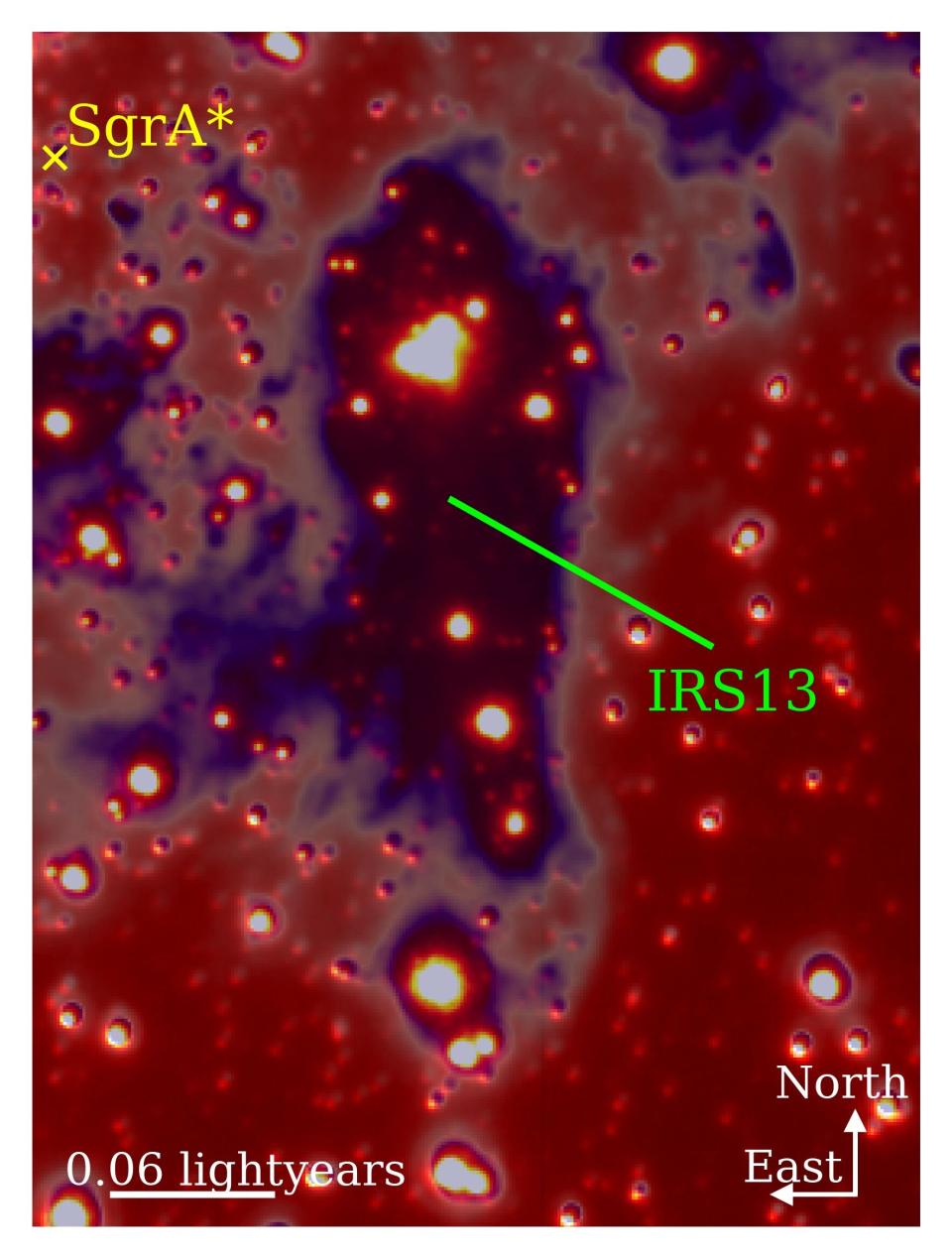When you buy through links in our articles, Future and its syndication partners may earn a commission.

For decades, astronomers have searched, without much joy, for signs of “missing link” black holes—black holes with masses between “stellar-mass black holes” and “supermassive black holes.” The former have been spotted across the universe, and the latter are cosmic titans that dominate the hearts of galaxies—but when it comes to intermediate-mass black holes, scientists have seen evidence of only about ten.
As reported earlier this month, scientists announced that using data from the Hubble Space Telescope, they’ve revealed the best evidence yet of an intermediate-mass black hole in Omega Centauri, the remnants of a galaxy that was devoured by the Milky Way. And, well, it turns out that looking for intermediate-mass black holes is a lot like waiting for a bus in London; you wait forever for one, and then two show up!
Another research team has found evidence of another intermediate-mass black hole, this time lurking near the supermassive black hole Sagittarius A* (Sgr A*) at the heart of the Milky Way, some 27,000 light-years from Earth.
The team, led by Florian Peißker from the University of Cologne, discovered this medium-sized black hole while studying the star cluster IRS 13, which is located about 0.1 light-years from Sgr A*.
Related: Over the past 25 years, black hole physicists have discovered the unimaginable
“IRS 13 appears to be an essential building block for the growth of our central black hole Sgr A*,” Peißker said. “This fascinating star cluster has continued to amaze the scientific community since it was discovered about two decades ago. It was initially thought to be an unusually massive star. However, with the high-resolution data, we can now confirm the composition of the building block with an intermediate-mass black hole at its center.”
In search of the missing voids in the universe
It is known that black holes with stellar masses of five to a hundred solar masses are formed by the collapse of stars with at least eight times the mass of our star. However, supermassive black holes must have a different origin, since no star can be large enough to collapse and leave a remnant. millions or even billions times as heavy as the sun.
This information has led scientists to theorize that supermassive black holes must be born by merger chains of increasingly larger black holes. It is also thought that these cosmic titans grow by ravenously feeding on the matter around them, including any unlucky stars that get too close and are torn apart and then sucked into the black hole in a so-called “tidal disruption event” or “TDE.”
This means that there should be a population of black hole “seeds” in the cosmos that exist in that vast mass gap between stellar and supermassive black holes that have not yet reached “supermassive status” but are still too massive to have formed from a collapsing star. Yet these intermediate-mass black holes are frustratingly difficult to discover.


Like all black holes, intermediate-mass black holes are bounded by a light-trapping “surface” called an event horizon. This boundary between the observable universe and whatever is inside a black hole not only makes it impossible for a signal to travel from the interior of a black hole into the wider cosmos, but it also makes it effectively impossible to “see” a black hole. That is, unless it is ripping stars apart in bright TDEs or feeding on the matter around it, which would heat up and glow brightly.
However, intermediate-mass black holes have failed to reach supermassive sizes because they are not surrounded by an abundance of material to feed on, so they do not show bright emissions of light in their surroundings, meaning they are almost completely dark. Therefore, scientists have to use clever techniques to detect unfeeding intermediate-mass black holes. For example, they look at the behavior of visible matter around black holes, such as stars, to see if they are being affected by gravitational effects. If so, those effects could be caused by a nearby black hole.


While looking at IRS 13, Peißker and colleagues saw the stars of this cluster at the heart of the Milky Way moving in an ordered pattern. This was surprising because the team had expected the stars to be randomly arranged.
There could be two explanations for this observation. Either IRS 13 interacts with Sgr A*, causing its stars to move in an orderly fashion, or there is a large gravitational influence in this cluster that keeps it well-ordered.
Using instruments including the Very Large Telescope (VLT), the Atacama Large Millimeter/submillimeter Array (ALMA), and the Chandra X-ray Space Telescope, scientists were able to determine that the ordered, compact shape of IRS 13 could indeed be the result of the presence of an intermediate-mass black hole at the center of IRS 13.
This finding is supported by the X-ray emission astronomers have seen from the cluster, which suggests ionizing gas swirling at speeds of many hundreds of thousands of kilometers per hour. That hot ionized gas could be swirling around the mouth of this newly discovered intermediate-mass black hole.
Not only would this give astronomers another “missing” link to a black hole, the findings could also explain a long-standing mystery surrounding IRS 13. The star cluster appeared to be much denser than other similar clusters in our galaxy — but that’s what you’d expect if there was an intermediate-mass black hole inside it.
RELATED STORIES:
— Galaxy M87’s giant black hole shoots out jets at near the speed of light
— Brightest quasar ever observed is powered by a black hole eating a ‘sun a day’
— The first black hole ever imaged by humans has warped magnetic fields and scientists are excited about it
The team now plans to continue this research by examining IRS 13 with the James Webb Space Telescope (JWST) and the Extremely Large Telescope (ELT), currently under construction atop Cerro Armazones in the Atacama Desert in northern Chile.
The team’s research was published July 18 in The Astrophysical Journal.